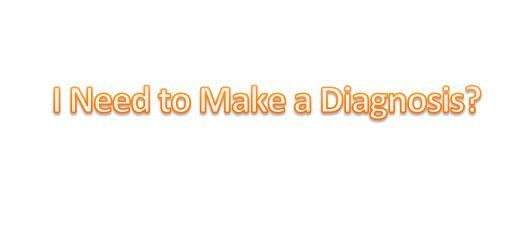
Diagnose. Then treat. Just do it. Even if it’s a preliminary diagnosis that you later confirm.
Dear Dr. Narda ~
I am a long-time medical acupuncture provider — I graduated from your Medical Acupuncture for Veterinarians course several years ago. I enjoy reading the discussions in our closed-group Facebook page. They have made all the difference in my comfort and pleasure in being part of a vibrant and growing community of forward thinking contemporary medical acupuncturists.
However — I do have one “bone” to pick with you. Why do you insist that members of the MAV group provide their palpatory findings, putative diagnosis, and overall impressions? I’ve seen lists of points provided in TCM books, and it would be so much easier if you can just give me a list of points to use if I’m treating a lame dog, an anorectic cat, or a horse with colic. It would save us both so much time.
Signed, “I Need to Make a Diagnosis?”

Dear “I Need to Make a Diagnosis?”
In short, yes. You need to make a diagnosis before you treat. Make it a presumptive diagnosis, or at least provide a differential diagnosis list. If you ask, “How should I treat a forelimb lameness in a cat with acupuncture?”, it would be wrong to respond with a list of points and say “Go forth and do good for this being.” Medical acupuncture, perhaps in contrast to some other ideologically based systems, is not a magical treatment with a set of points that casts a spell on the disease process at hand. Instead, it is a cogent and rational means by which we gently and effectively impart neuromodulatory impulses to the patient’s nervous system network in order to promote restoration of normal firing patterns and physiologic events. As you also should have realized after taking the MAV course, acupuncture works by relaxing and revising the connective tissue network so that circulatory and neural networks can work in conjunction with the myofascial fabric and glandular elements of the body to regain “eu-function” and reduce “dys-function”.
So…what we are treating and why (i.e., what the problems are, what the diagnosis is (at least presumptively), and what the neuromodulatory / circulatory / myofascial / internal medical outcomes to be achieved are should be foremost in our mind before beginning treatment. Does this take more thought than following a point prescription provided by an anonymous person centuries ago or even just yesterday? Yes, it does. Will it be more effective? Yes, it will.
Whether one is a conventional or integrative medical / veterinary healthcare provider, assessing the patient fully — with a history, a myofascial palpation evaluation, a physical examination (including neurologic evaluation), and watching them move or asking them to perform other assessments that are relevant to their presentation, is what we need to do to give our patients the best care possible based on what their presence, their attitudes, their bodies are telling us. Wouldn’t we want that for ourselves when we see a healthcare provider? To be assessed and treated individually, comprehensively, and appropriately?